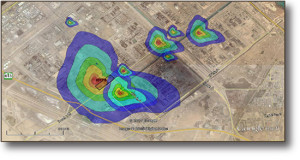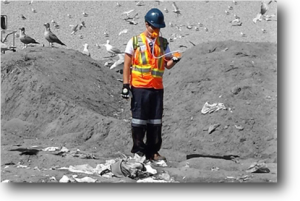[av_layerslider id=’11’]
[av_heading tag=’h3′ padding=’10’ heading=’Environmental Odour Impact Assessment’ color=’custom-color-heading’ style=” custom_font=’#a8a8a8′ size=” subheading_active=” subheading_size=’15’ custom_class=”][/av_heading]
[av_one_half first min_height=” vertical_alignment=” space=” custom_margin=” margin=’0px’ padding=’0px’ border=” border_color=” radius=’0px’ background_color=” src=” background_position=’top left’ background_repeat=’no-repeat’]
[av_textblock size=” font_color=” color=”]

[/av_textblock]
[/av_one_half]
[av_one_half min_height=” vertical_alignment=” space=” custom_margin=” margin=’0px’ padding=’0px’ border=” border_color=” radius=’0px’ background_color=” src=” background_position=’top left’ background_repeat=’no-repeat’]
[av_textblock size=” font_color=” color=”]
♦ Determine the odour levels (frequency, Duration, Concentration) at sensitive receptors.
♦ Identify and rank odour sources.
♦ Differentiate the odour impact of one plant from neighboring plants.
♦ Recommend solutions for odour impact reduction.
♦ Determine efficiency of installed odour control technologies.
[/av_textblock]
[/av_one_half]
[av_one_full first min_height=” vertical_alignment=” space=” custom_margin=” margin=’0px’ padding=’0px’ border=” border_color=” radius=’0px’ background_color=” src=” background_position=’top left’ background_repeat=’no-repeat’]
[av_heading tag=’h3′ padding=’10’ heading=’Conducting Odour Impact Assessment’ color=’custom-color-heading’ style=” custom_font=’#a8a8a8′ size=” subheading_active=” subheading_size=’15’ custom_class=”][/av_heading]
[av_textblock size=” font_color=” color=”]
Odour assessment of a refinery plant must utilize 4 main phases and technologies:
[/av_textblock]
[av_slideshow_accordion slide_type=’image-based’ link=’category’ items=’5′ offset=’0′ size=’featured’ title=’active’ excerpt=’aviaTBexcerpt’ autoplay=’true’ interval=’5′]
[av_slide_accordion id=’810′ title=’1. Field Odour Patrol using personal olfactometery and portable gas analyzers.’ link=’lightbox’ link_target=”][/av_slide_accordion]
[av_slide_accordion id=’811′ title=’2. Source sampling and olfactometric laboratory analysis’ link=’lightbox’ link_target=”][/av_slide_accordion]
[av_slide_accordion id=’818′ title=’3. Dispersion modeling’ link=’lightbox’ link_target=”][/av_slide_accordion]
[av_slide_accordion id=’819′ title=’4. Reporting’ link=’lightbox’ link_target=”][/av_slide_accordion]
[/av_slideshow_accordion]
[/av_one_full][av_heading heading=’Field Odour Patrol’ tag=’h3′ style=” size=” subheading_active=” subheading_size=’15’ padding=’10’ color=’custom-color-heading’ custom_font=’#a8a8a8′][/av_heading]
[av_one_half first min_height=” vertical_alignment=” space=” custom_margin=” margin=’0px’ padding=’0px’ border=” border_color=” radius=’0px’ background_color=” src=” background_position=’top left’ background_repeat=’no-repeat’]
[av_textblock size=” font_color=” color=”]

[/av_textblock]
[/av_one_half]
[av_one_half min_height=” vertical_alignment=” space=” custom_margin=” margin=’0px’ padding=’0px’ border=” border_color=” radius=’0px’ background_color=” src=” background_position=’top left’ background_repeat=’no-repeat’]
[av_textblock size=” font_color=” color=”]
Field Odour Patrol is used for:
♦ Source identification: determining the sources that need to be sampled and measured using olfactometric laboratories
♦ Baseline Study: assess the plants emission at the boundary and at the sensitive receptors (neighboring residents)
♦ Contribution Study: assess the impact of other nearby odour causing industries
♦ Quality Assurance: assess the accuracy of predicted impact from dispersion model and source sampling by comparing the results to real measured field data.
♦ Determine the effect of process events (e.g. flaring) on odour impact of the plant.
[/av_textblock]
[/av_one_half]
[av_heading tag=’h3′ padding=’10’ heading=’Analyzing the Results and Reporting’ color=’custom-color-heading’ style=” custom_font=’#a8a8a8′ size=” subheading_active=” subheading_size=’15’ custom_class=”][/av_heading]
[av_one_half first min_height=” vertical_alignment=” space=” custom_margin=” margin=’0px’ padding=’0px’ border=” border_color=” radius=’0px’ background_color=” src=” background_position=’top left’ background_repeat=’no-repeat’]
[av_textblock size=” font_color=” color=”]

[/av_textblock]
[/av_one_half]
[av_one_half min_height=” vertical_alignment=” space=” custom_margin=” margin=’0px’ padding=’0px’ border=” border_color=” radius=’0px’ background_color=” src=” background_position=’top left’ background_repeat=’no-repeat’]
[av_textblock size=” font_color=” color=”]
Using odour patrol plus sampling with dispersion modeling, the data can be analyzed to provide a report outlining:
[/av_textblock]
[/av_one_half]

